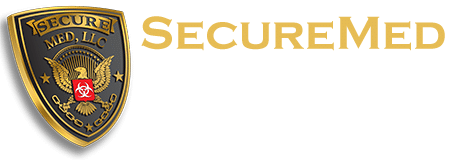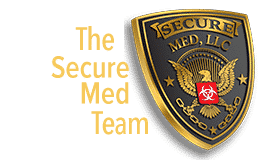What You Need to Know About Medical Waste Autoclaves
What is a medical waste autoclave?
A medical waste autoclave is a sterilization pressure chamber that circulates steam heated to 300 degrees. Charles Chamberland invented the autoclave in 1884. They can range in size from the size of a desk to 25+ feet long and 10 feet high. According to Explainthatstuff.com, “An autoclave is essentially just a large steel vessel through which steam or another gas is circulated to sterilize things…Typically the chambers in autoclaves are cylindrical, because cylinders are better able to withstand extreme pressures than boxes, whose edges become points of weakness that can break.”
What does it do?
Medical waste autoclaves sterilize regulated or red bag medical waste by killing bacteria and infectious material within the waste. Unlike incinerators, medical waste autoclaves are safe for the environment – the process is chemical-free, no radiation, and they do not produce harmful emissions.
How does it work?
Waste is put into the machine on carts, the door is shut and 300-degree steam is pumped in for up to about an hour. According to Explainthatstuff.com, “The exact sterilizing time depends on a variety of factors, including the likely contamination level of the items being autoclaved (dirty items known to be contaminated will take longer to sterilize because they contain more microbes) and how the autoclave is loaded up (if steam can circulate more freely, autoclaving will be quicker and more effective).” At this point, the waste is considered noninfectious because it no longer poses a bacterial or infectious threat. It can now be considered solid, non-hazardous trash and taken to a landfill.
What can be treated in an autoclave?
This process works for biomedical waste – any items that are (or were potentially) contaminated by blood, body fluids, or other infectious materials. Some common examples of regulated medical waste include: gloves, gauze, gowns, bandages, needles, syringes, scalpels, etc. An important distinction is that autoclaves are NOT meant for hazardous materials. The temperature reaches 300 degrees which will sterilize bacteria, but is not considered proper treatment for hazardous waste such as: chemotherapy waste, some pharmaceutical waste, and some expired medications.
What is the difference between autoclave and incineration?
Medxwaste.com says, “There are two primary methods to deal with medical waste once it’s been disposed of in properly-labeled medical waste packaging: incineration and autoclaving. While both treat medical waste, the two are vastly different procedures. Each serve a different purpose, and whether to autoclave or incinerate is contingent on the type of medical waste that is being disposed of.”
Google defines incineration as “a waste treatment process that involves the combustion of organic substances contained in waste materials.” In essence, it is the controlled burning of medical waste. One of the benefits is that incineration reduces what goes into landfills; however, it generates pollution in the form of emission of gasses into the atmosphere including particulate matter, heavy metals, dioxins, furans, sulfur dioxide, and hydrochloric acid.
On the other hand, autoclaves use moist heat to sterilize the medical waste and therefore do not emit any harmful gasses into the environment.
Licensing and Permits
Like most facets of the medical industry, waste management is regulated at both federal and state levels. It’s important to be sure that you use a reputable waste management company that is properly licensed and permitted.
At SecureMed we manage secure medical waste collection, transportation and disposal services from start to finish. We are licensed and permitted to transport medical waste and it is our priority to make our services convenient, efficient and affordable.
We can perform regularly scheduled service; whether you have lots of medical waste or very little. We can stop by daily, weekly, monthly, or quarterly to collect your medical waste–after which we will transport it and dispose of it securely, giving you a tracking manifest and certificate of destruction.
Contact us today for a free quote!







